Feline Lymphoma: When To Euthanize – Everything You Should Know

Every pet owner wishes nothing but good health and a long, happy life for their beloved pet. Unfortunately, some pets face serious health problems that may be life limiting.
Feline lymphoma is a common type of cancer among cats. This cancer affects cells called lymphocytes, which have many important roles in the healthy functioning of the body. If these cells become cancerous, this is bad news for your pet.
For many cats battling this cancer, the symptoms they experience have a dramatic impact on their quality of life.
If your cat is dealing with feline lymphoma When to euthanize is a question that might preoccupy your mind, especially if your cat is dealing with an aggressive form of this cancer.
Continue reading to find out everything you need to know including the most tricky issue; when is euthanasia recommended. Hopefully, this article can help you decide how to proceed when it comes to making the difficult decision of ending your beloved pet’s life.
Feline Lymphoma When To Euthanize – An Overview

Before we discuss this topic in depth, let’s quickly go over the two most important subjects – feline lymphoma and feline euthanasia.
What Is Feline Lymphoma?
Feline lymphoma is a cancer of the cells of the lymphatic system – lymphocytes. Lymphocytes are white blood cells, and they play a role in virtually every part of a cat’s system.
When a lymphocyte cell transforms into a cancer cell, the lymphocytes lose all normal functions within the body and it begins to shut down.
What Is Feline Euthanization?
Euthanasia is the process of administering a fatal substance to a patient with the intention of relieving their unbearable and unending pain and inducing death. The patient, in this instance, is a very ill cat. This is often referred to as having an animal ‘put down’ or ‘put to sleep’.
It is our responsibility to ensure that, if an animal’s life must be ended, it is done so humanely and with a focus on reducing suffering. That is what euthanasia does. Every cat owner wants their pet to pass away without suffering, and fortunately, current veterinary procedures make this possible.
How Is Feline Euthanasia Performed?
Feline euthanasia is a very simple procedure, performed by a trained veterinarian.
The first thing your vet will do is make sure your pet is lying comfortably. There is usually an option for the pet owner to be beside them, as most pets are more relaxed that way, but it’s not a necessity.
The vet will give the pet a sedative, to calm them down and help them relax. After sedation, the vet will administer an injection that will make the pet unconscious and shut down the heart and brain. This is usually done using an IV in one of the pet’s legs.
The pet may make some uncontrollable movements after the lethal shot has been administered and their eyes might not completely close. It is important to understand that this does not mean the animal is in pain!
The entire procedure lasts just a few minutes.
A few days before the euthanasia, it’s recommended to make arrangements as to what will happen with the animal’s body afterwards. Some vets have the option of taking care of the body for you (cremation or burial), while others don’t so you will need to handle this yourself.
When Should Euthanization Of A Cat Be Considered?
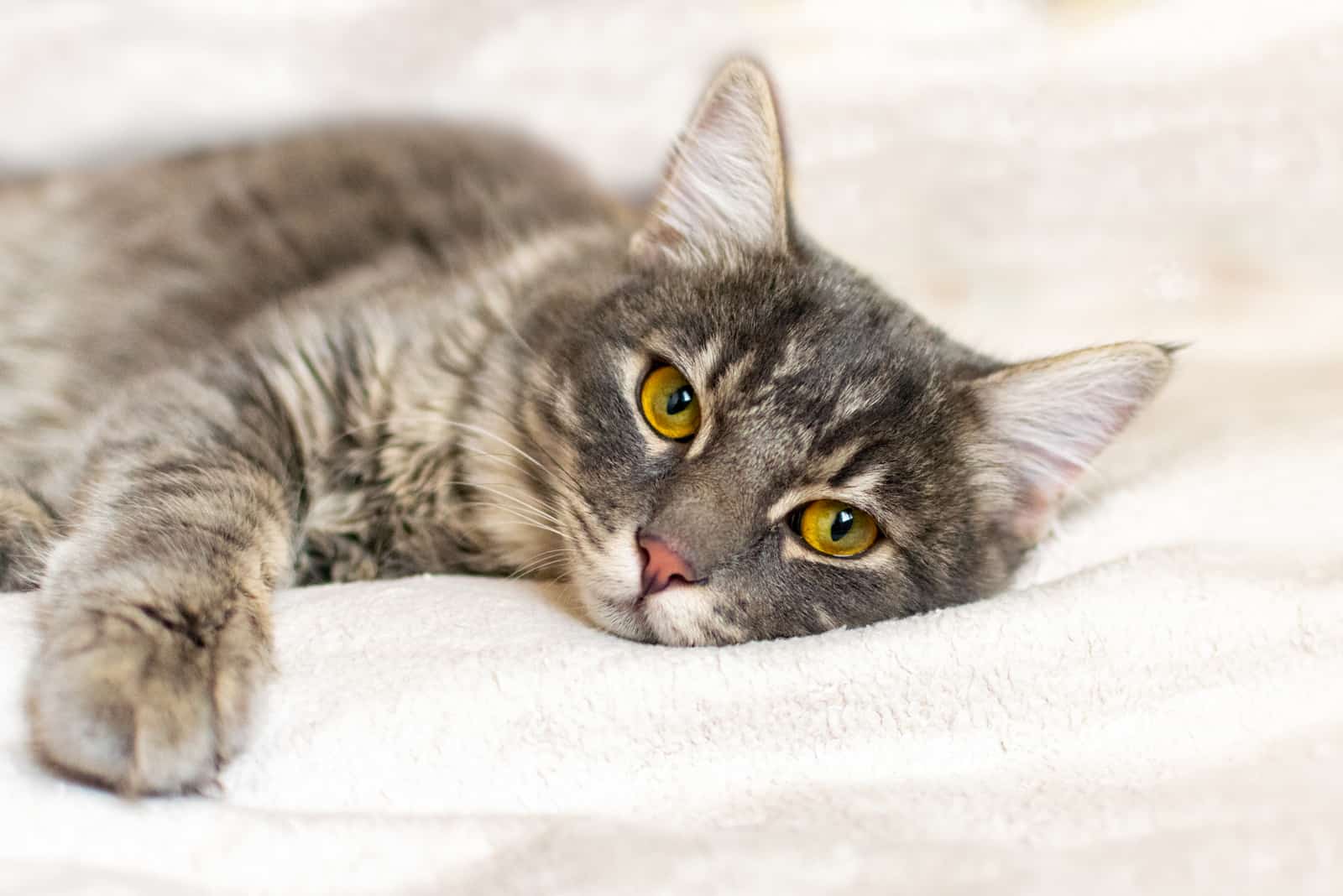
Euthanisation is not an easy choice to make, and the biggest question of all is How do I know when euthanasia is the right choice?
Below is a general list of behaviors and symptoms that are a good indicator that it is time that feline euthanasia should be performed:
• Experiencing significant weight loss
• Being weak and lethargic all the time
• Not responding to treatment anymore
• Cat’s health being seriously deteriorated
• Cancer being in a very progressive state where it is surely fatal
• Being continuously in pain
• Having no interest in eating or drinking
• Experiencing a complete change in personality
• Experiencing a complete change in physical appearance
• Always seeking solitude
• Having no energy
• Not moving around as much
• Sleeping all the time
• Having more bad days than good days
• Avoiding physical contact
• Not using the litter box anymore
• Being disoriented
• Not wanting to go outside
• Not wanting to play, even for a short time
• If your veterinarian recommends euthanasia
Remember that cats are experts at concealing illness. Most of the time, your cat is in considerably more discomfort than they’re displaying, so carefully consider your cat’s symptoms.
6 Things You Must Do Before Deciding To Go Forward With Feline Euthanasia

Considering how big a decision feline euthanasia is, there are several things you must consider in order to make the final choice to put your cat to sleep or not. Below, I’ve listed the most important things you should do before deciding to go forward with euthanizing your cat.
1. Learn As Much About Your Pet’s Disease As Possible
Knowing about your pet’s disease will help you prepare yourself. Learning about your cat’s condition means you know what to expect. Most pet owners handle their pet’s cancer diagnosis better when they know more about it and understand what their pet is experiencing.
Knowing about the disease will also mean knowing about treatment. Find out what treatment options there are, what symptoms to look out for, what the life expectancy is, etc. Your vet may be the best person to give you this information, but it’s recommended that you also look into it more yourself.
2. Look Into All Treatment Options Available
After your pet’s diagnosis, it’s important to look into what your options are regarding your cat’s treatment plan. Cancer is not necessarily a death sentence, and feline lymphoma (at least many forms of this cancer) are actually treatable.
Your doctor of veterinary medicine (usually a veterinary oncologist) will inform you about all the potential progress of the disease and potential treatment plans, including which one they recommend for your cat. Of course, some cats get no benefit from treatment and for them, feline euthanasia may be the better option.
3. Learn About Feline Euthanasia
Learning about what feline euthanasia really is, how is it performed and what the goal of this procedure is can really ease your mind and help you make the right choice for your pet. This is the process of giving your pet a painless and merciful death, and learning about it can help you get rid of any misconceptions you might have about it.
4. Monitor Your Cat’s Life
It is important to thoroughly consider all aspects of your cat’s life and really think about the symptoms your cat is experiencing and how good their life at the moment really is. Most of the time, when feline euthanasia is brought up, a cat’s quality of life has become very bad. However, some cat owners, overwhelmed by love for their pet, might miss some clues about how bad their kitty really is. That is why, I suggest you try to look at how your cat behaves objectively, monitor their day-to-day life, and – finally – determine if your cat is happy living that way.
5. Talk To Your Veterinarian About It
Veterinarians have been trained to recognize when a cat is ready to be put to sleep. It is likely they’ve encountered a number of cats for whom euthanization was the right choice. The vet will also be able to tell you if euthanization is not necessary and if your cat has a relatively good quality of life despite their cancer diagnosis.
6. Take Some Time To Make Your Decision
Do not feel pressured to make the decision too quickly. You don’t have to decide right away unless you are sure your cat has reached the point of serious suffering. Take some time to really think about it and decide what you feel it’s best. By making the decision in a thoughtful, balanced way, you can be confident it’s the right thing to do and you will feel more comfortable doing it.
Everything You Need To Know About Feline Lymphoma
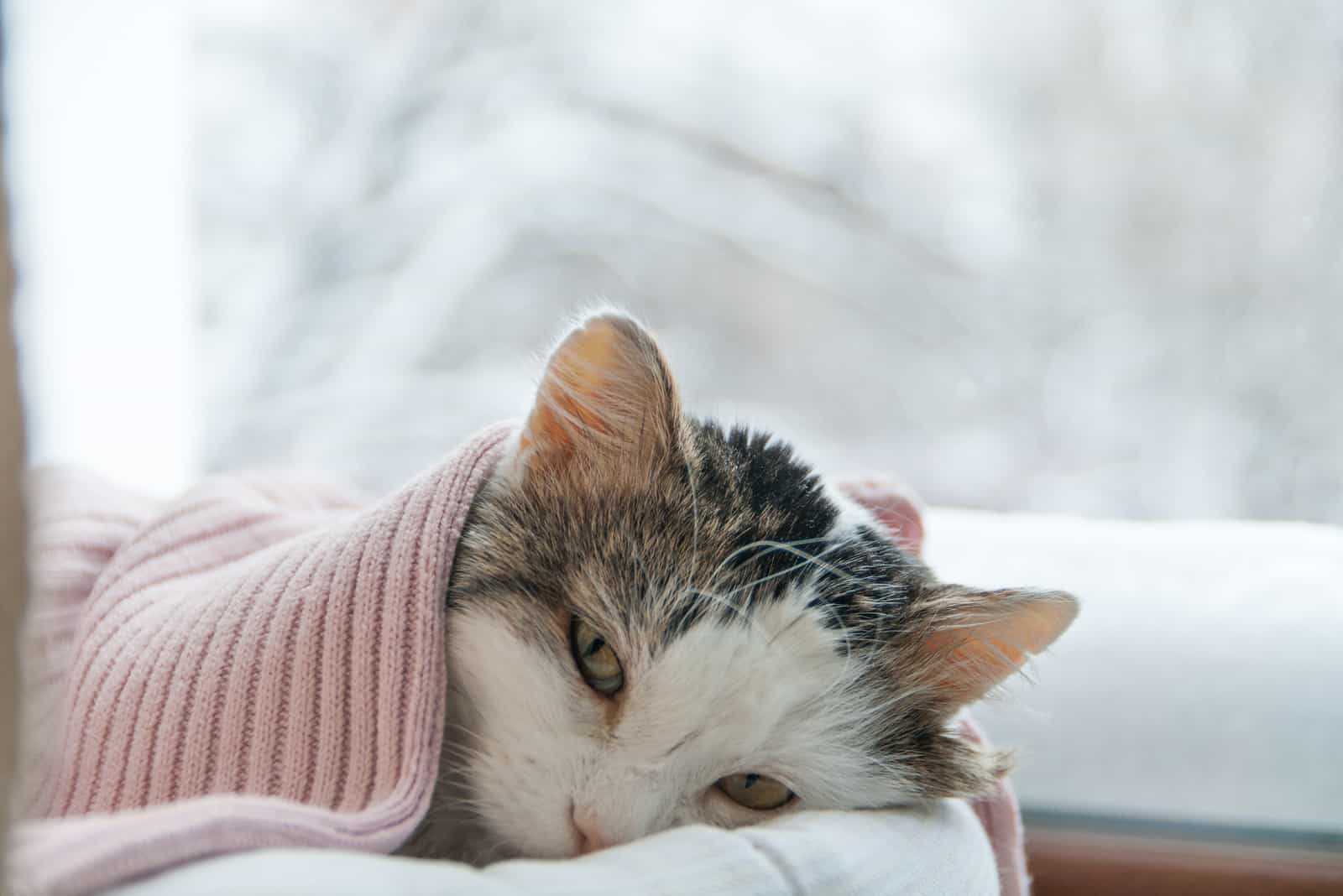
It’s very important to know as much as you can about your cat’s cancer before deciding to proceed with feline euthanasia. Understanding the disease will help you to understand what your cat is going through and when it’s the right time to proceed with euthanasia.
What Types Of Feline Lymphoma Exist?
In general, there are two types of feline lymphoma:
• Low grade (or small cell) lymphoma
• High grade (or large cell) lymphoma
Low grade lymphoma develops over 3-6 months. The symptoms slowly start to appear and can be observed gradually worsening during the 3-6 month period. On the other hand, high grade lymphoma develops much more rapidly (in the course of a few days or a few weeks). Unfortunately, high grade lymphoma is more commonly observed in cats, and it needs more aggressive treatment.
Since lymphocytes, a type of immune system white blood cell, are found almost everywhere in the body, lymphoma can be found almost anywhere.
When it comes to lymphoma of a specific organ, there are several different types:
• Gastrointestinal lymphoma (the most common type of lymphoma)
• Nasal lymphoma (the type of lymphoma that responds best to treatment)
• Renal lymphoma
• Kidney lymphoma
• Liver lymphoma
• Skin lymphoma
• Spleen lymphoma
• Chest cavity lymphoma
• Central nervous system (spinal cord and brain) lymphoma
• Other rare types (for example, bone lymphoma)
A cat can have lymphoma in more than one place. For example, a cat with kidney lymphoma might also develop lymphoma of the central nervous system. Cancer is not limited to one site within the body and it can spread.
How Is Lymphoma Different In Cats Compared To Dogs And Humans?
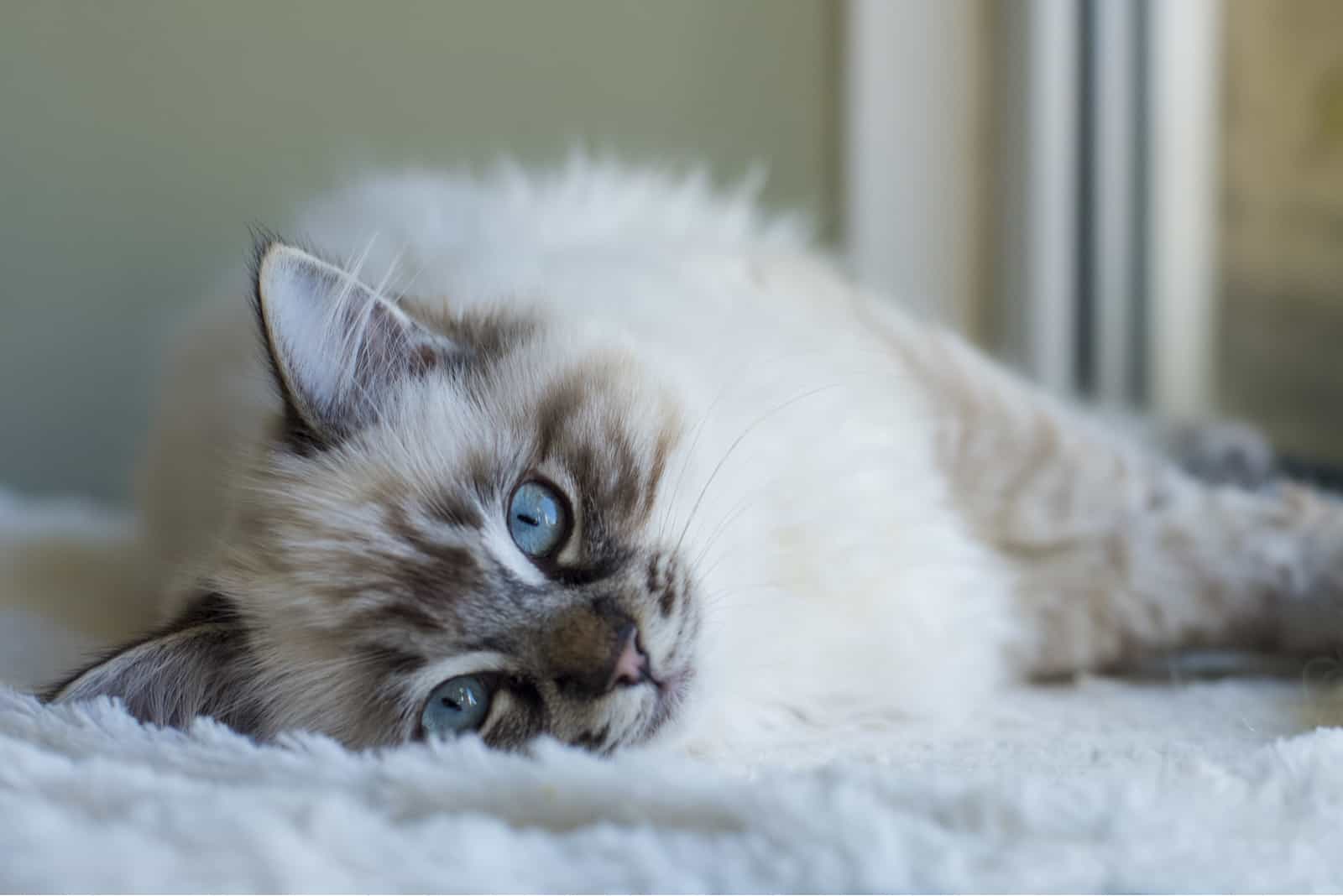
In dogs and humans, cancerous lymphocytes usually accumulate in the lymph nodes located in the neck and armpit. This makes the lymph nodes swollen, which can be felt by palpating, and can even be visible.
On the other hand, cancerous lymphocytes in cats tend to accumulate internally, usually within the abdominal cavity, meaning you cannot really feel or see it.
It may come as a surprise, but cats tolerate chemotherapy very well. If we compare how cats, dogs and humans handle chemotherapy – cats generally manage it best. Unfortunately, chemotherapy in cats has a success rate of 50% to 80% whereas this type of treatment in dogs and humans has a much higher success rate (success meaning going into remission, having a significantly reduced number of cancer cells)
What Causes Feline Lymphoma?
Although it’s difficult to pinpoint the exact cause of lymphoma, it is known that the potential causes are:
• Genetic
Genetic events lead to the transformation of a normal lymphatic cell to an abnormal (cancer) cell.
• Viral
Known viral causes of feline lymphoma are feline immunodeficiency virus (FIV) and the feline leukemia virus (FeLV).
• Environmental
A correlation between exposure to tobacco smoke and instances of feline lymphoma has been observed.
Are Some Cats More Likely To Suffer From Feline Lymphoma?
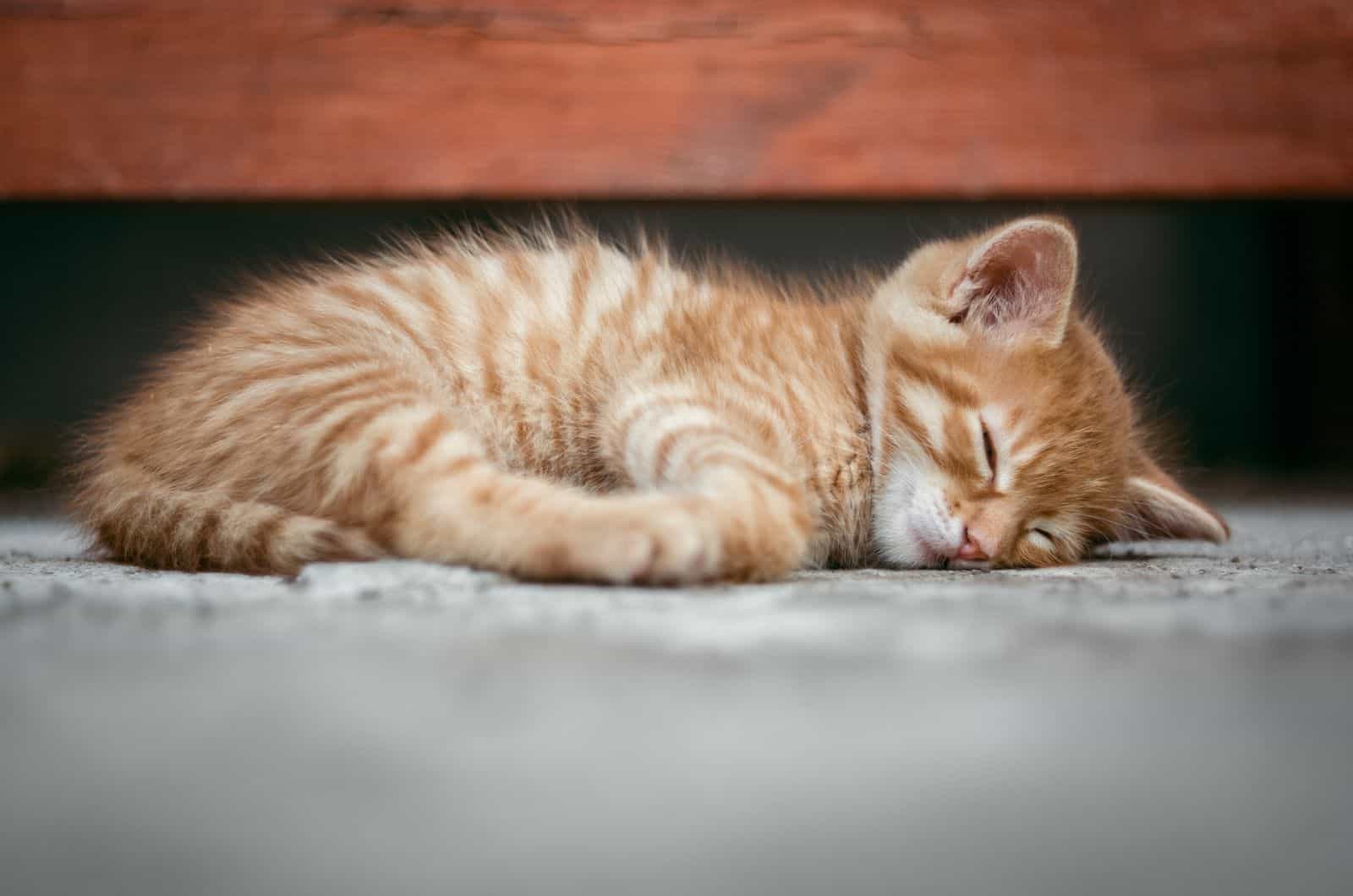
There are 3 important factors that determine a cat’s susceptibility to feline lymphoma:
• Age
• Being positive for feline immunodeficiency virus (FIV) and feline leukemia virus (FeLV)
• Being exposed to tobacco smoke
Feline lymphoma is usually diagnosed in middle-aged cats (10-12 years old), but it is frequently observed in older cats too. Of course, younger cats can be affected, but that is a rare occurrence.
Cats that test positive for feline immunodeficiency virus (FIV) are 5 to 7 times more likely to develop lymphoma compared to cats that are negative for feline FIV. The good news is that a positive test for feline FIV does not impact how the cat will respond to cancer treatment.
It has been observed that cats with feline leukemia virus (FeLV) are 60% more likely to develop feline lymphoma. Sadly, if they do develop it, they usually don’t respond to cancer treatment well. A cat that does not have feline leukemia has a much higher chance of having a successful cancer treatment.
What Are The Symptoms Of Feline Lymphoma?
There are many, varied symptoms that occur in cats battling with feline lymphoma, including:
• Vomiting (common in all types of feline lymphoma)
• Lethargy (common in all types of feline lymphoma)
• Decreased appetite or a complete loss of appetite (common in all types of feline lymphoma)
• Weight loss (common in all types of feline lymphoma)
• Diarrhea (characteristic for gastrointestinal feline lymphoma)
• Runny nose (characteristic for nasal lymphoma)
• Frequent sneezing (characteristic for nasal lymphoma)
• Loud snoring (characteristic for nasal lymphoma)
• Difficulty breathing (characteristic for nasal lymphoma)
• Facial deformity (characteristic for nasal lymphoma)
• Kidney failure (characteristic for kidney lymphoma)
• Anemia (characteristic for kidney lymphoma)
• Increased urination (characteristic for kidney lymphoma)
• Incontinence (loss of control over urination; characteristic for kidney lymphoma)
• Coughing (characteristic for chest cavity lymphoma)
Clinical signs of feline lymphoma depend on the type of lymphoma a cat has, i.e. the location of the cancer.
It is to be expected that a cat with kidney lymphoma will not have the same symptoms as a cat with nasal lymphoma. It is important to get any unusual symptoms checked out by a vet.
How Is Feline Lymphoma Diagnosed?
At the vet’s office, you can expect the veterinarian to perform the following procedures:
• Physical exam (to check for enlargements, useful in cases of gastrointestinal lymphoma)
• Bloodwork
• Urinalysis
• Ultrasound (to check for enlargements of liver or spleen – sites of potential cancer)
• X ray
• Biopsy and microscopic examination of the cells obtained via biopsy
Microscopic examination of the cells obtained via biopsy is a definitive way to confirm the presence of feline lymphoma.
When a cat owner arrives at the vet’s office and explains all symptoms their cat is displaying, the vet will perform a physical exam. In the majority of cases, no abnormalities are found. They will also do blood tests (these are often normal as well), but x ray and ultrasound tests are likely to indicate that something is wrong and the vet will probably suspect cancer.
The vet may suggest you go to a veterinary oncologist, who will be more experienced in cat lymphomas..
Can Feline Lymphoma Be Treated?
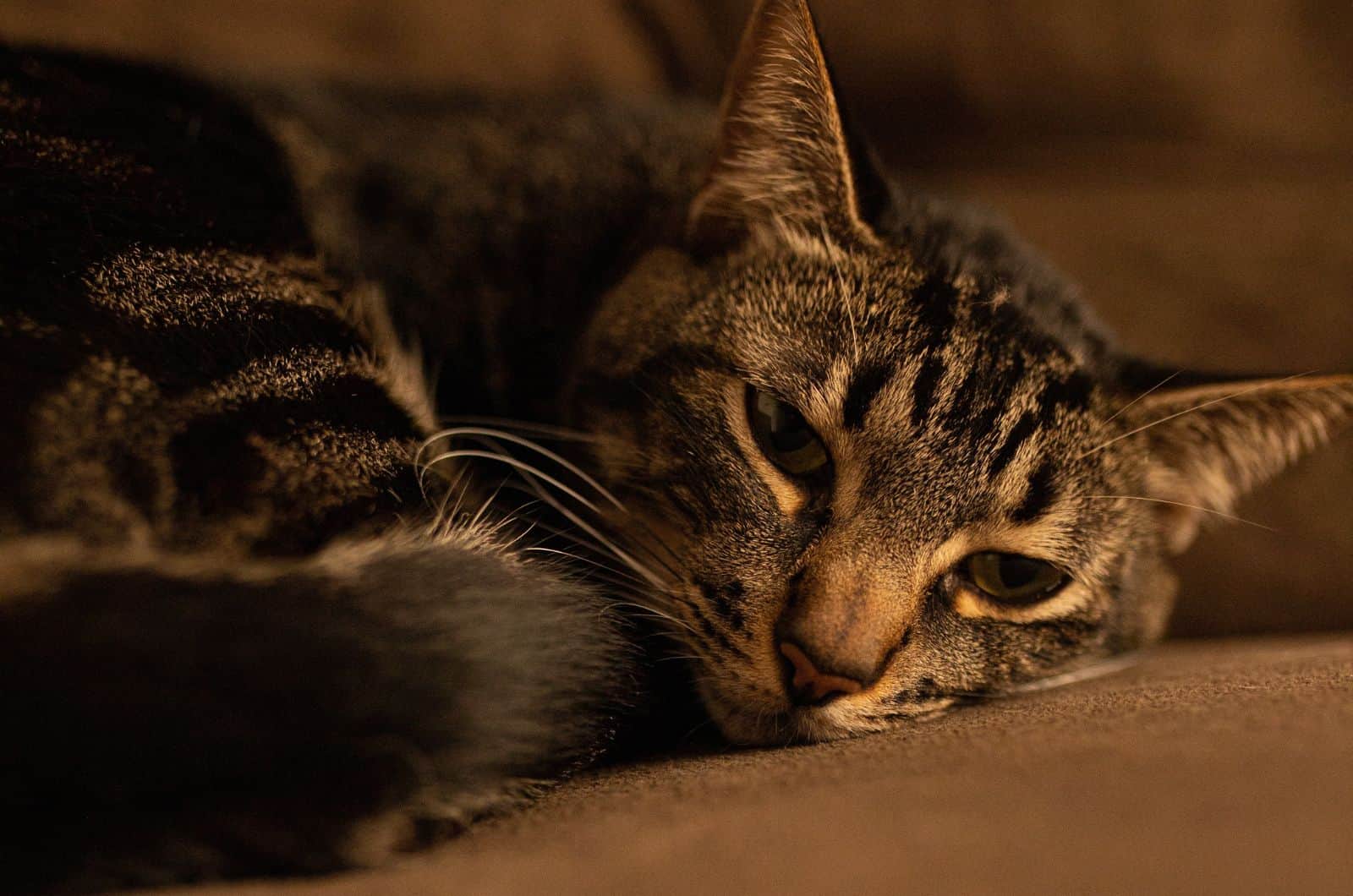
Yes, feline lymphoma can be treated! This does not mean treatment is successful in 100% of cases. When we talk about success, in the case of cancer treatment, we mean remission.
Remission is a stage when the cancer has stopped growing and the number of cancer cells has significantly reduced (called partial remission); or when the cancer is completely gone and there are no signs of cancer in the cat’s body (called complete remission).
The usual treatment plan for cats with feline lymphoma involves chemotherapy, radiation therapy, or surgery.
Treatment will depend on the stage of advance and the location of the cancer. Surgery may be recommended to remove an intestinal mass in the case of large cell lymphoma of the intestinal tract, while radiation therapy can be very effective in the treatment of lymphoma in the nasal cavity.
With cats, the results of treatment are unpredictable. Some cats respond to their treatment very well and, even in cases of partial remission, cats can go on to live happily and with no significant side-effects. Other cats, on the other hand, might not respond to the same type of treatment at all.
Treatment Of Low Grade Feline Lymphoma
Cats with low grade lymphoma are usually treated with oral chemotherapy. The two most widely used drugs for this treatment are prednisone and chlorambucil. Prednisone is converted to prednisolone in the cat’s liver; prednisolone is actually the drug that will be helping your cat. Chlorambucil is sold under the name Leukeran and is a commonly used drug for treating cancer.
Each of these drugs might cause some negative side-effects, but in general, cats handle these two drugs very well. Nevertheless, medical monitoring of a cat’s health is essential.
Treatment is first given on a weekly basis, then monthly, then every 6 weeks until the end of treatment. This treatment is given to the cat by the vet.
Treatment of low grade feline lymphoma is typically less expensive than treatment of high grade feline lymphoma.
Treatment Of High Grade Feline Lymphoma
Cats with high grade feline lymphoma are usually treated with CHOP chemotherapy.
This is a multiagent protocol, and 4 drugs are used:
• Cyclophosphamide
• Doxorubicin
• Vincristine
• Prednisolone
The treatment plan involves receiving chemotherapy intravenously and in the form of a weekly pill for 2 months, and then every other week for the rest of the six months.
Palliative Care
If chemotherapy or radiation therapy are not a viable option, cats can only receive palliative steroid treatment (prednisolone). For two to four months after starting this medication, cats typically experience a short period of improvement or remission of their illness.
Although cats undergoing steroid-only therapy have a considerably worse prognosis than cats receiving more rigorous chemotherapy protocols, the medication can be administered at home, which drastically reduces the frequency of vet visits and the cost of the treatment.
A life expectancy of 1-2 months is expected when using prednisone alone for high-grade lymphoma.
What Is The Cost Of Treating Feline Lymphoma?
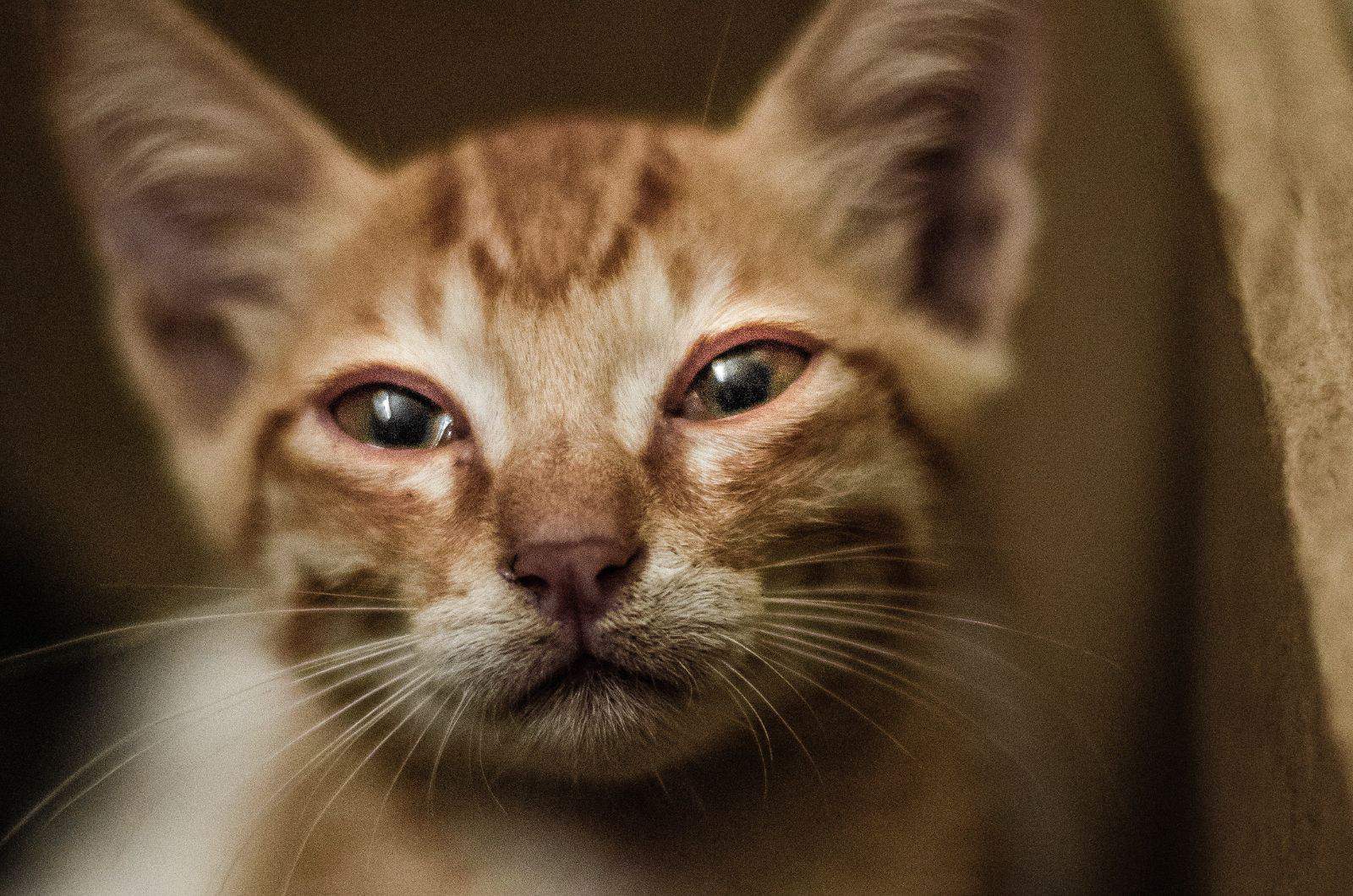
Treatment of feline lymphoma is expensive for most cat owners.
You can expect the price for a 6-month treatment of feline lymphoma with CHOP chemotherapy (which is the most common treatment for this type of cancer) to be anywhere from $5,500 – $6,500.
If your doctor of veterinary medicine (DVM) decides to use radiation to treat your cat’s cancer, you can expect to pay $4,500 – $6,000.
The cost of palliative care (for example pain medication or steroids) depends on the pharmacy you’re using and what kind of medication your pet prescribed.
What Is The Life Expectancy Of A Cat With Feline Lymphoma?
The life expectancy of a cat with feline lymphoma depends on the following factors:
1. The Type Of Lymphoma The Cat Is Fighting
Some types of feline lymphoma don’t respond to treatment as well as others. For example, kidney lymphoma is much harder to treat than nasal lymphoma.
2. How The Cat Responds To Treatment
Some cats respond to treatment very well, while others do not. There is really no way to predict how well a cat will respond.
If a cat is not responding to treatment:
• and is battling with an aggressive form of cancer (high grade lymphoma), life expectancy is anywhere from a few weeks to 3-6 months (but there are always exceptions).
• and is battling with a low grade lymphoma, their life expectancy is longer than cats with high grade lymphoma and can be 2 – 3 years.
If a cat is responding to treatment, it is possible that:
• the cancer is treated successfully and never returns.
• the cancer returns (known as a relapse), but it’s successfully treated again.
• a cat continues receiving treatment for the rest of their life because the cancer would grow without it.
• a cat will have a lifespan of 6-9 months, even if they respond to treatment (this is usually the case for cats with gastrointestinal large cell lymphoma)
• a cat will have a lifespan of 2-3 years, even if they respond to treatment (this is usually the case for cats with gastrointestinal small cell lymphoma)
3. What Stage the Cancer Has Reached
As you can guess, cats that have been diagnosed with feline lymphoma in the early stages of the cancer will respond much better than cats whose cancer has progressed further before the start of treatment.
4. If The Cancer Has Metastasized Or Become A More Aggressive Form
Treating cancer at one site is much easier than treating a cancer that has metastasized to other parts of the body.
In most cases, cats who have low grade lymphoma but then develop high grade lymphoma will not react well to treatment and their prognosis is not good.
Can Feline Lymphoma Be Prevented?
There is no guaranteed way to prevent feline lymphoma, but there are some things you can do to lower the chance of a cat developing feline lymphoma, such as:
• Vaccinating cats against feline leukemia virus (FeLV) and feline immunodeficiency virus (FIV).
• Avoiding the cat’s exposure to tobacco smoke.
• Taking a cat to a full-body physical examination and blood work testing.
It has been proven that cats positive for FeLV and FIV have a much higher chance of developing feline lymphoma at some point in their lifetimes. Vaccination is a very important step towards lowering your cat’s chances of having lymphoma.
Exposure to tobacco smoke is associated with higher instances of lymphoma in cats. Make sure your cat is not exposed to tobacco smoke.
Finally, it’s better to prevent the disease and treat it early on. Having regular full body examinations and blood work tests done can catch the cancer in the early stages and dramatically improve the prognosis.
FAQ
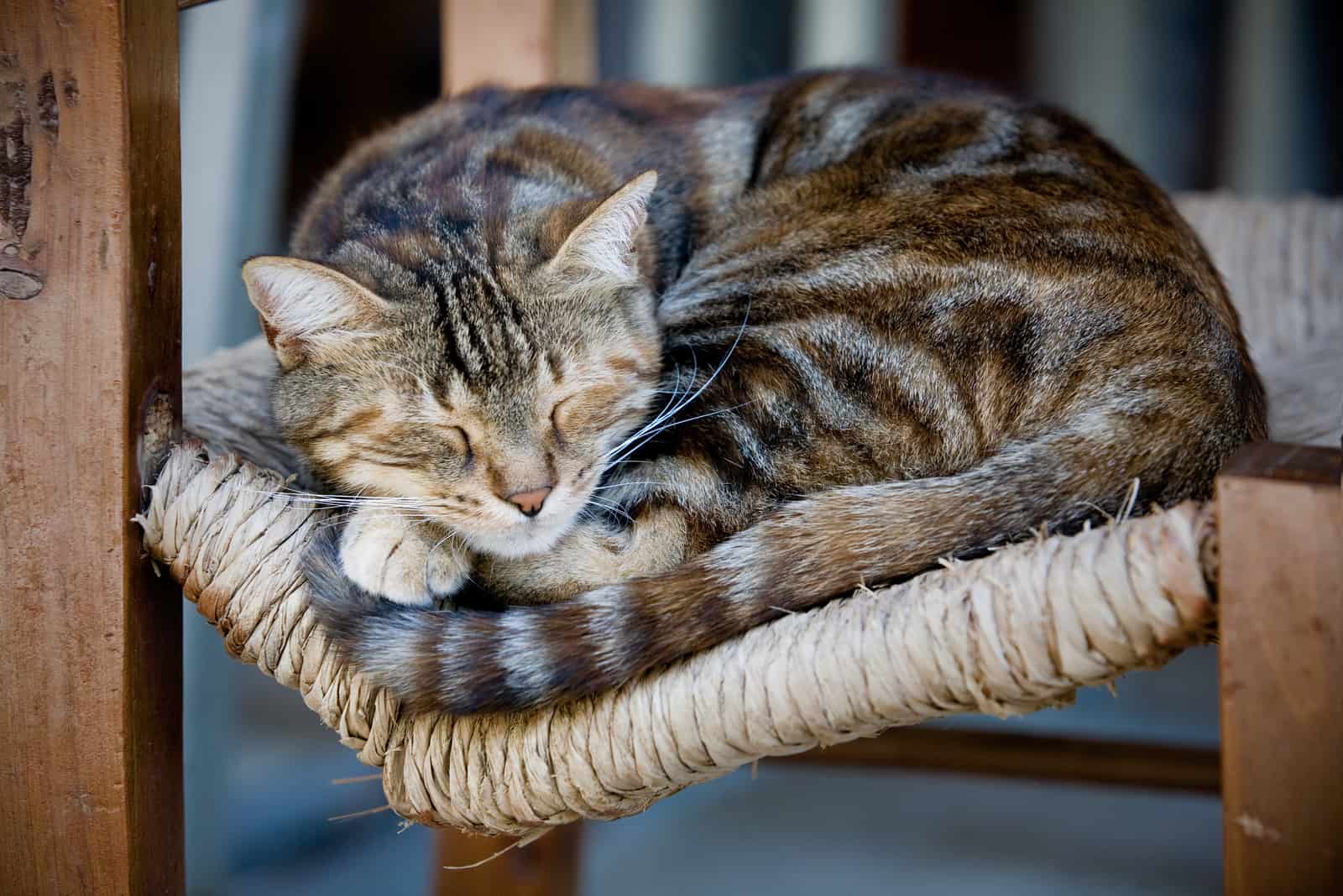
How Long Can A Cat Live With Untreated Lymphoma?
The average survival time for cats that receive no treatment is from 1 month to 3 months, but there are always exceptions and a cat may not live this long, or they may live longer.
What Is The Prognosis For Cats With Lymphoma?
There are really no rules regarding the prognosis for a cat with lymphoma.
The prognosis for cats with lymphoma depends on many factors, such as:
• What type of feline lymphoma they’re battling with
• How far progressed the cancer is
• Whether they’re responding to treatment or not
• Whether or not the cancer has metastasized
• If the cat has any other health issues, apart from the lymphoma
It’s best to talk to your veterinarian about your individual cat’s prognosis, as they know the medical history of your cat, and they can examine it closely and understand the unique nature of your cat’s cancer.
Do Cats With Lymphoma Suffer?
Whether a cat with feline lymphoma suffers depends on many factors. It cannot be said that every cat with lymphoma is suffering, because many don’t experience severe symptoms.
If a cat is battling with an aggressive form of lymphoma in a very progressed stage and with metastasis of cancer to other sites of the body, they’re suffering more than a cat battling a non-aggressive lymphoma IN its early stages.
A pet owner will know when their pet is suffering, especially if they have had their cat for a long time and know them well. Even though cats tend to hide their illness, cats that are experiencing a lot of pain will have changes in their behavior, as well as their physical appearance, giving us clues that the cat is suffering.
Why Is A Cat Euthanized?
When a cat’s quality of life has been significantly diminished by a painful, fatal ailment or sickness, euthanasia is advised.
It is only advised to euthanize a pet if there is no other option (for instance, if all other forms of treatment have failed and nothing can improve or stabilize your pet’s health).
Euthanasia is sometimes referred to as a “good death” and giving a cat a calm and merciful end of life is often the right thing to do, but it is never an easy choice to make.
Why Would A Veterinarian Recommend Euthanasia For A Cat With Cancer?
A veterinarian recommends euthanasia for pets that:
• Are fighting with a cancer (or any other disease) that cannot be treated
• Are suffering greatly due to the consequences of cancer
• Have completely stopped responding to treatment and there is nothing more they can do for them
• Have very bad quality of life, are suffering greatly or experiencing a lot of pain.
Veterinarians are trained to recognize when feline euthanasia is the best possible option for the pet in question. If they suggest that you go forward with putting your pet to sleep, that means they believe that the pet will be better off passing in this way.
Is It Normal To Feel Guilty About Euthanizing A Cat?
Everything you are feeling about the prospect of euthanizing your pet is valid. Losing a pet is always hard, whether the cat passes naturally or through euthanasia.
Choosing feline euthanasia is not a decision that’s easy to make. Almost all pet owners have some doubts about proceeding with it, but at the end of the day, you will know when it is the right thing to do.
If you are feeling guilty, I can assure you there is nothing to feel guilty about – your beloved kitty is not suffering anymore and has died peacefully.
Take some time to grieve the loss of your pet and deal with your emotion, but know this – you did the right thing by giving your pet a merciful death!
Final Thoughts

Feline lymphoma is a common cancer observed in cats. It is treatable, but that does not necessarily mean that every cat treated for it will respond to treatment well and go into remission. In fact, many cats are unresponsive to treatment and many others experience a relapse.
If your cat is dealing with feline lymphoma When to euthanize? is a valid question that is bound to arise. For cat owners with cats that have seriously deteriorated because of lymphoma, it can be a question of ‘when’ rather than ‘if’..
Feline euthanasia is a good choice for cats whose health has been on a steep decline and who have been suffering a lot due to the symptoms of lymphoma. Euthanasia is also advised for cats who are not responding to treatment anymore when there is nothing anyone can do to reduce their suffering.
Please be sure to speak with your veterinarian and get his opinion before making this final choice. They have all the necessary experience and will know if and when to put a cat down.
Saying goodbye to a beloved pet is never an easy choice to make, but sometimes it’s necessary to ease their suffering and give them a dignified passing.
If you are thinking about euthanizing your cat, I hope this article has given you more insight into this condition and will help you make the best choice. It is good to have all the facts at your disposal before making that choice.
I’m confident you’ll choose the right thing for your beloved pet!
Related Articles:
Cat With FIP When To Euthanize: Helping You Make A Decision






